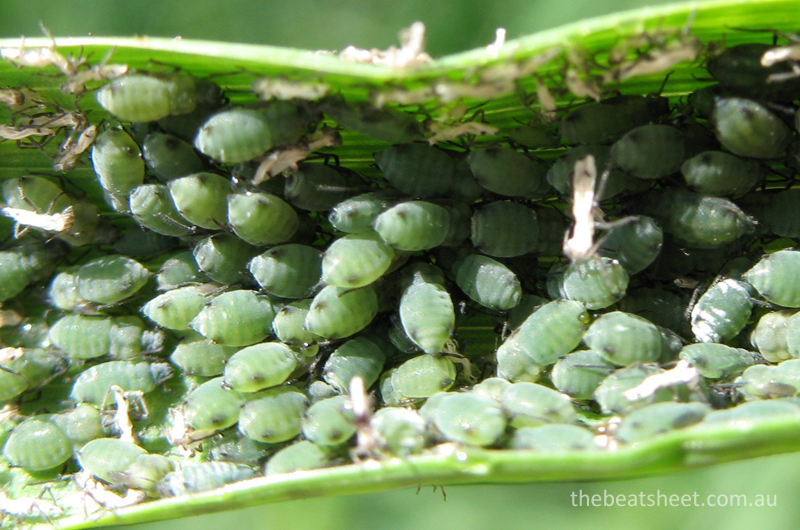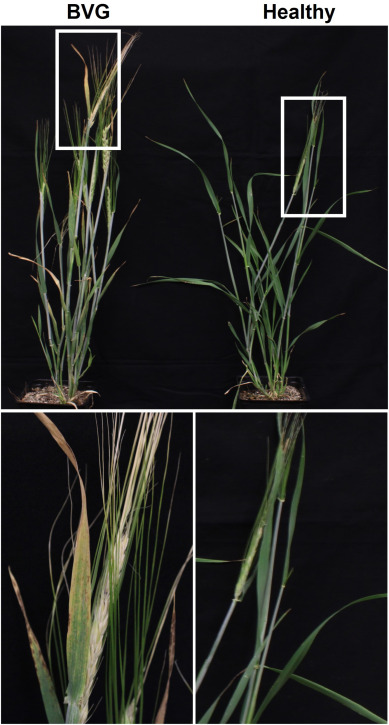A recent survey of six fields across the Darling Downs and northern New South Wales has confirmed the presence of BVG (in all six fields), with varying levels of infection. The fields surveyed were spread across key cropping areas, including regions around Goondiwindi, Tara, and greater Dalby. This widespread detection highlights the need to remain vigilant and monitor crops closely.
What is BVG and how is it transmitted?
BVG is a Polerovirus that was first reported in South Korea in 2016.
The first identification within Australia was in Victoria in 2018. However, it’s likely not a new disease, as a 34-year-old archived oat sample from Victoria also tested positive for BVG, suggesting it has been present for decades but only recently identified due to advances in diagnostic technologies.
BVG infects barley and oats and to a lesser extent, wheat.
The virus is transmitted by aphids, primarily Rhopalosiphum maidis (corn leaf aphid), which is more prominent in Queensland, and to a lesser extent by Rhopalosiphum padi (bird cherry-oat aphid). These aphids acquire the virus while feeding on infected plants and can spread it across crops.

Corn aphid colony on barley
Symptoms to look for and impact on yield
BVG symptoms can be subtle and inconsistent, making detection challenging. Some infected plants show yellow discolouration of leaf tips and margins, similar to other yellow dwarf virus disease symptoms.
Currently, the epidemiology of BVG and its impact on yield are not well understood, either in Australia or internationally. While the virus has been detected in barley, oats, and wheat, its effect on crop productivity remains unclear.

BVG-infected compared to healthy barley. Source: Anna Erickson, Jun Jiang, Yen-Wen Kuo, Bryce W. Falk (2023). Construction and use of an infectious cDNA clone to identify aphid vectors and susceptible monocot hosts of the polerovirus barley virus G. Virology, 579:178-185. https://doi.org/10.1016/j.virol.2023.01.011
Testing available
If you notice suspicious symptoms or suspect aphid activity, consider sending in samples for testing. Both plant and aphid samples are valuable for understanding the spread of BVG in the region.
Sample collection tips
- Send at least 5cm2 of leaf or a whole leaf of plants showing symptoms, and/or
- Collect live aphids attached to a leaf sample or remove them and put them in a sealed bag or container.
- Include paddock location, crop stage, and contact details
Express post is recommended to maintain sample integrity.
Questions or sample submissions?
If you’re seeing symptoms or have concerns, contact Fiona Filardo at the Department of Primary Industries (DPI) Queensland:
📞 [07] 37088449
📧 [email protected]
This forms part of the GRDC and QLD DPI funded project DAW2305-Effective virus management in grain crops.
